Field day - Doug and Janet Bogardus' farm and Northland Kauri
Yvonne Steinemann and Dean Satchell, June 2019
Peter Davies-Colley introduced Doug and Janet at their house while it poured down outside. They built their mud brick and timber house themselves, with some beautiful Lawson cypress beams and lintels.
Surfboards and paddle boards
The rain allowed the opportunity for Doug to explain how his brother and him got into building paulownia surfboards and paddle boards. They started out by figuring out what was the right timber, there are plenty of species to choose from that are light and strong, such as red cedar, redwood and even balsa-wood. But these mostly came from old growth timber from natural rainforests, which did not fit with their ethics. In their pursuit of a product not made out of foam and fibreglass, paulownia emerged as the winner, a very light, yet strong and workable timber that can be grown in short rotation plantations.
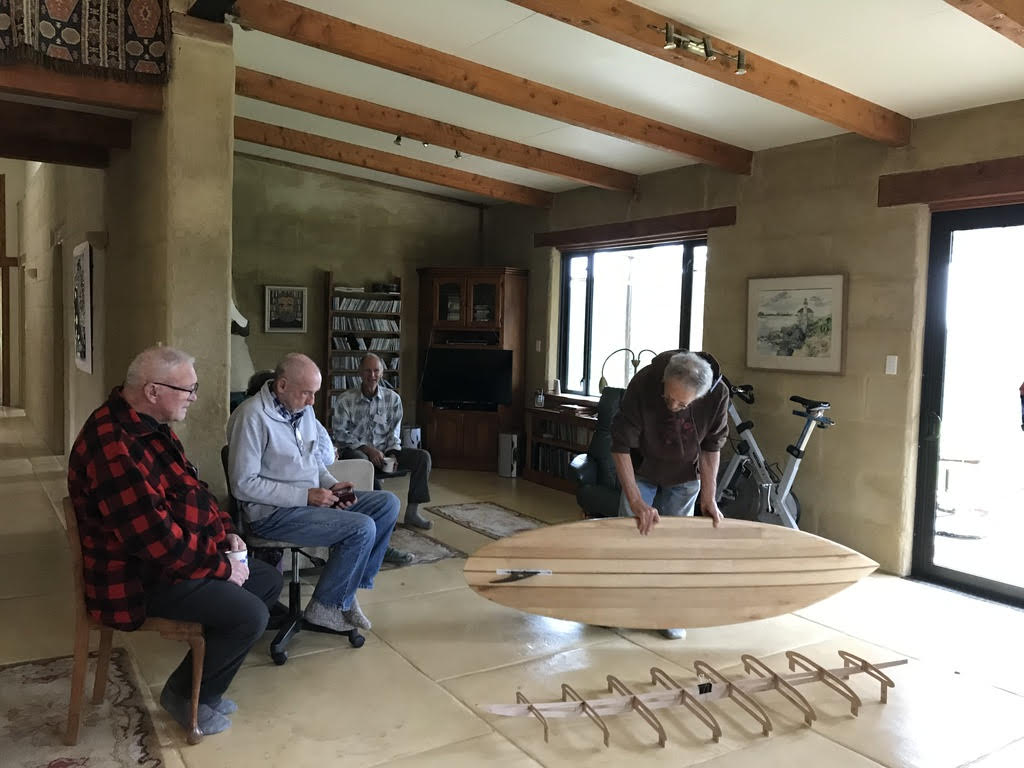
Doug and his brother Randy started out by building paddles. The very best paddles are light yet strong, and laminating timbers and experimenting with the design has resulted in a quality product, with a shaft that flexes so ones shoulder joints don't cop the full force of the action.
Building wooden surfboards is definitely challenging. They need to be very light, yet strong. The design is like an aircraft frame used to be, a hollow wooden frame covered with a skin of paulownia. These are not cheap to build, so are more of a craftsman product with a fairly hefty price tag. A work of art, very beautiful.
The property
The rain stopped and allowed the group to have a look around the property. Doug loves trees and started planting 24 years ago with a small agroforestry pine block. The trees were GF 26 cuttings, planted at a very low stocking and pruned to 6 metres. The butt logs are very large, as are the trees, with some heavily branched headlogs. Doug has been selling trees and is very happy with the income.
From there the group gathered amongst a poplar block that wasn't so successful. The trees had not grown very well, despite being planted in "river flat" country that would be moist even during summer. The consensus was that there is a fertility issue, the soil is actually a podsol and lacking in phosphate. I have found this myself, poplars do require adequate fertility.
Next stop was a block of blackwoods, over twenty years old and pruned. The consensus was that the trees have not been thinned enough, but that there is hope for income, provided they are well managed from now on. The opportunity could be for cutting trees down and milling on site with the portable sawmill on the property. Often the knarly trees produce the best timber with this species.
Discussion ensued on the billion trees campaign and what the "punters" could plant. It was suggested that Eucalyptus microcorys (tallowwood) was a good "plant and forget" species with high value timber, unlike blackwoods which require a dedicated effort over a period of time to do it right and produce quality trees and therefore income. The block of E. microcorys was nowhere near as big as the pines but had still produced very good volumes for 23 years old and very straight trees that had largely self-pruned. Imported class 1 durable hardwood is currently selling for $5000 a cubic metre in NZ and tallowwwood offers a real opportunity to diversify and produce good incomes from trees. The whole tree can be used, with small logs down to less than 20 cm quartered for fence posts. Carbon was also discussed, and with twice the density of radiata pine and a higher basal area, the potential for carbon farming was agreed by everyone to be exceptional.
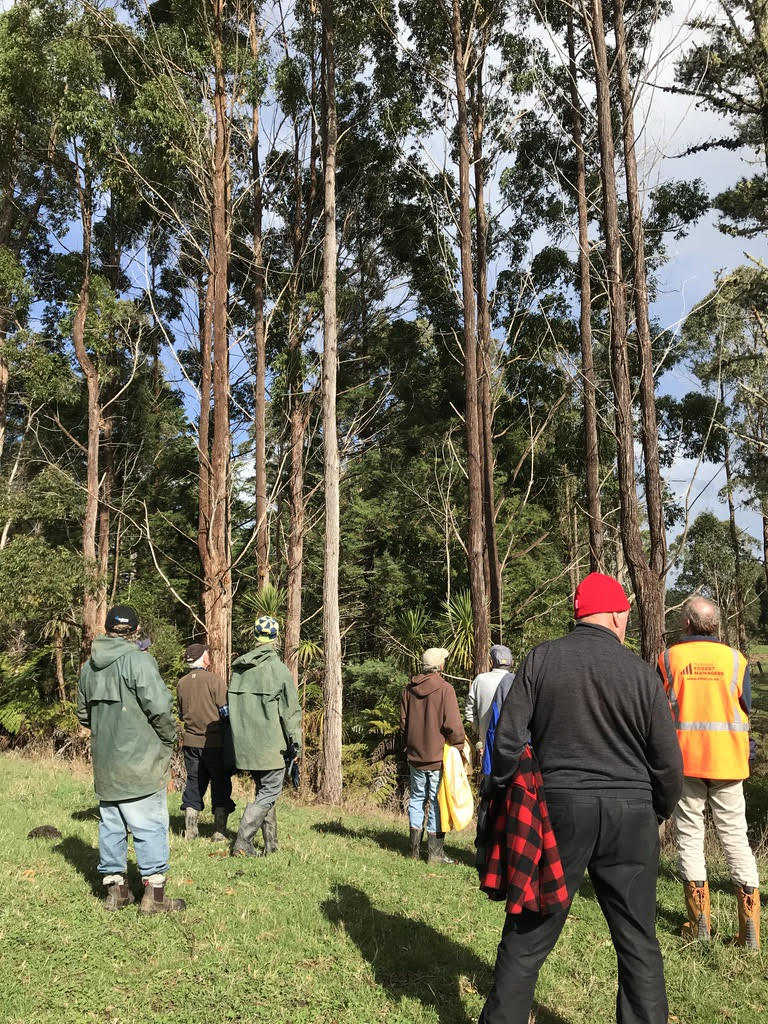
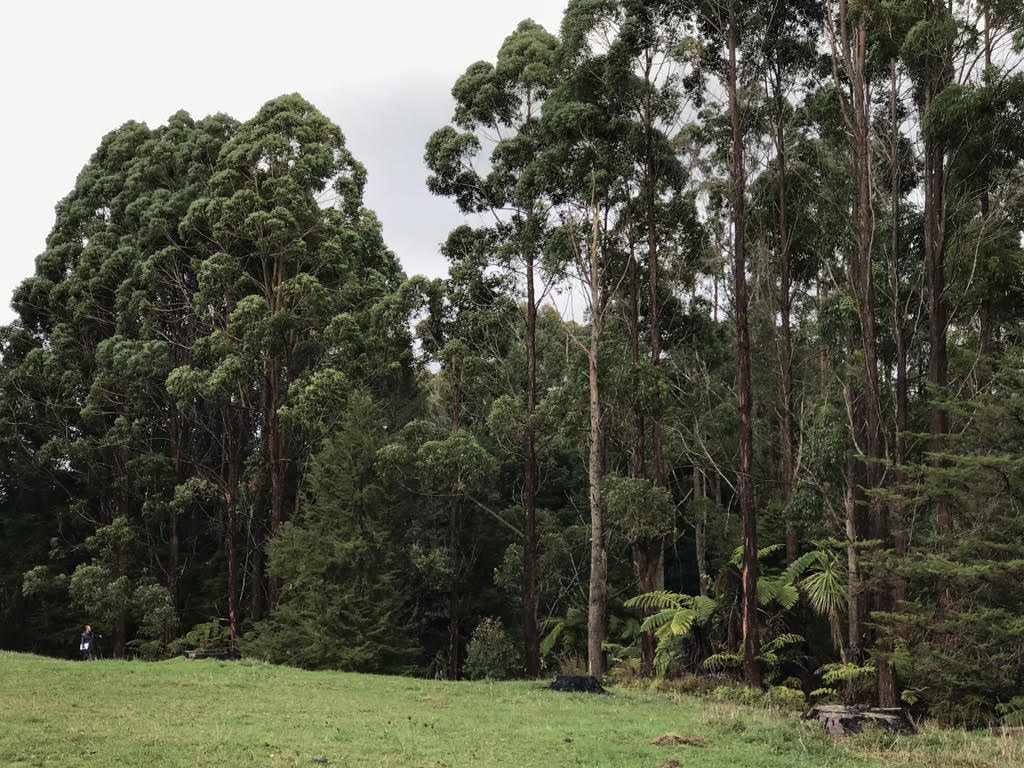
On the way back to the house for lunch we passed by some large Eucalyptus pilularis (blackbutt) which Doug had pruned. They were wide-spaced trees with big spreading crowns and clean buttlogs, nearly as big as the radiata, with good volumes of timber likely in a few years when mature. They are also lovely to look at from the house. The weather has settled by lunchtime and the sun came out.
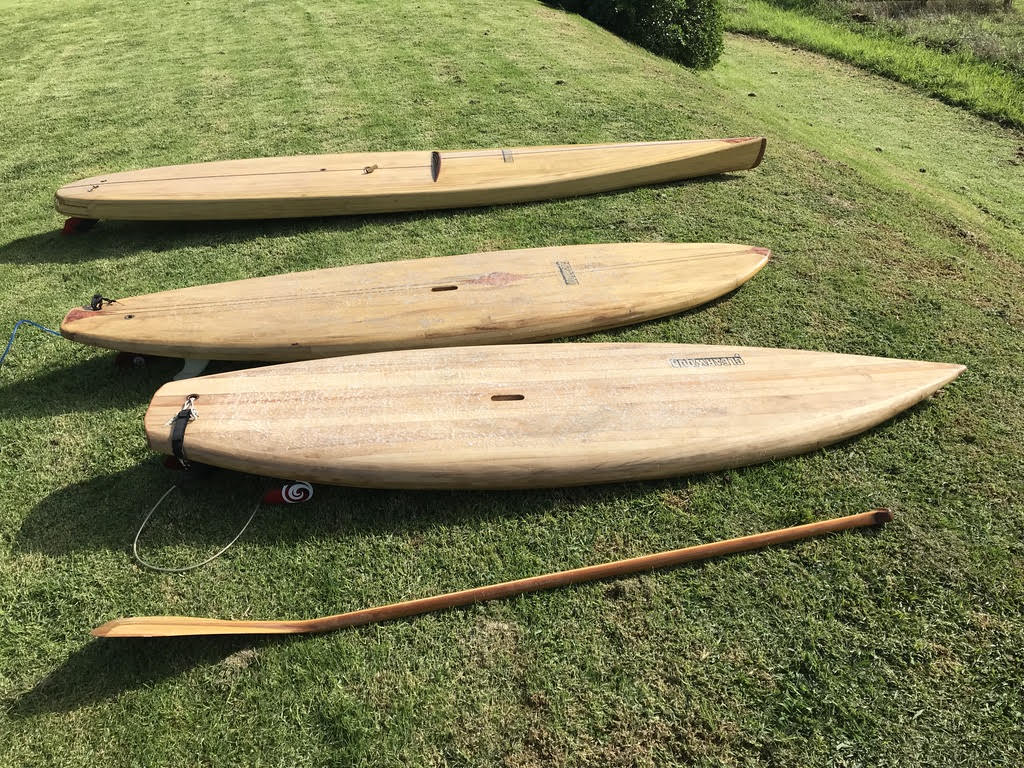
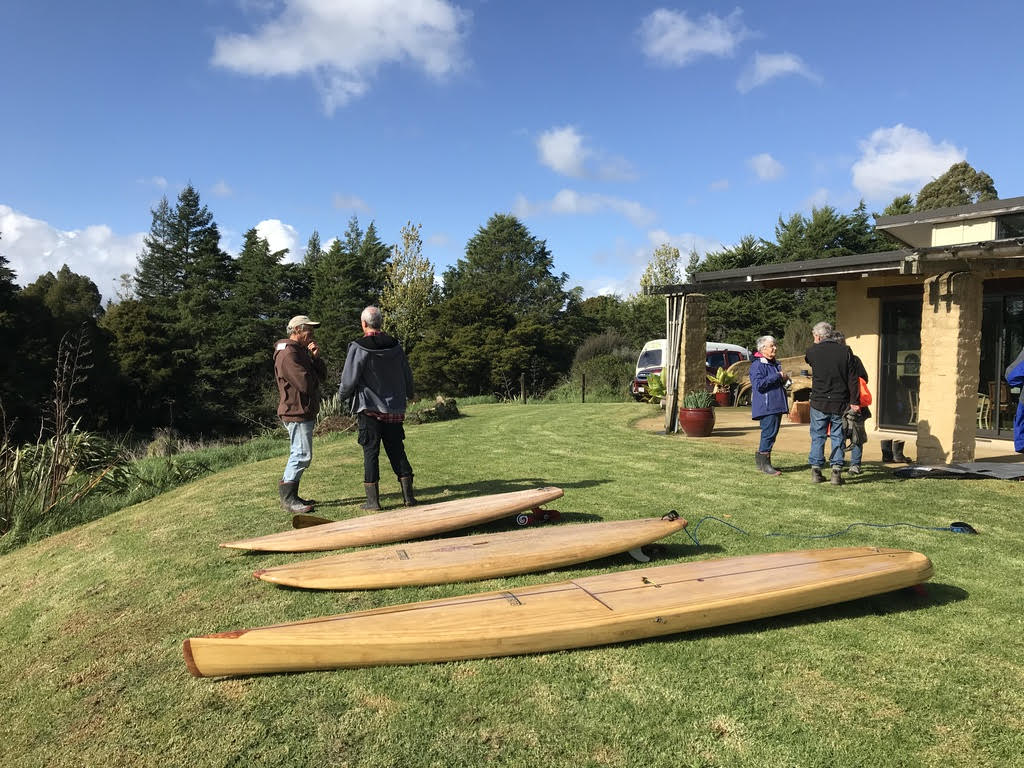
Northland Kauri
After lunch the group visited Northland Kauri Sawmills. The four staff work well as a team, and each enjoy their specialist areas. All have their main roles but three of them have general skills so can fill in for others if necessary. Milling logs is done by Simeon the sawmiller - a specialist skill.
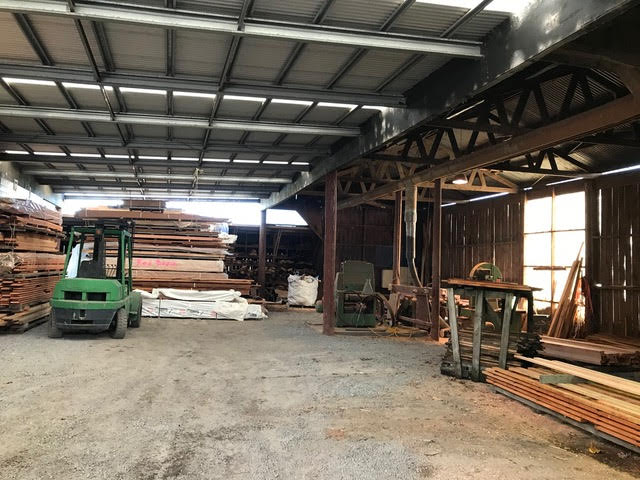
Site visits are undertaken to look at tree stock in the field - grade, value, trucking options. Northland Kauri use Phil, a local OSH compliant logger to drop trees. They also work in with other millers (many using Mahoe mills) who bring in their wood for processing. Wood comes off the mill in various grades and is then filleted by Northland Kauri's specialist filleter, who works 3 days per week.
Drying timber
Decking takes 3 - 6 months to dry to 25% and is not kiln dried. Flooring timber is air dried until 20% moisture, then kiln dried.
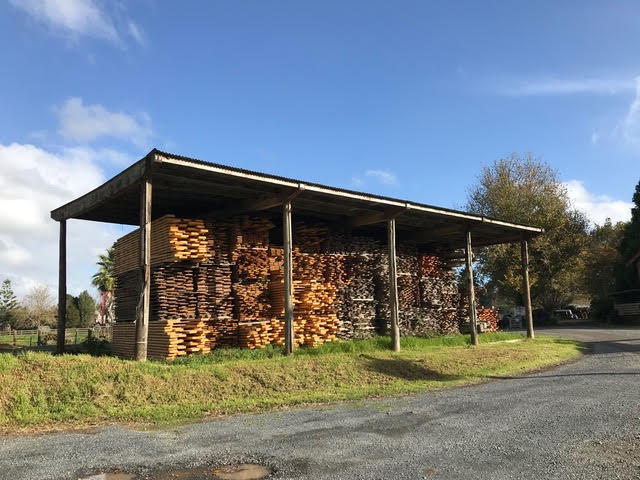
Planing timber
The planer machine was very fancy, it can do 4 sides and a range of profiles with knife blades changed or specially cut for bespoke jobs for clients eg banister rails. Timber usually goes through two times for quality straightness and finish.
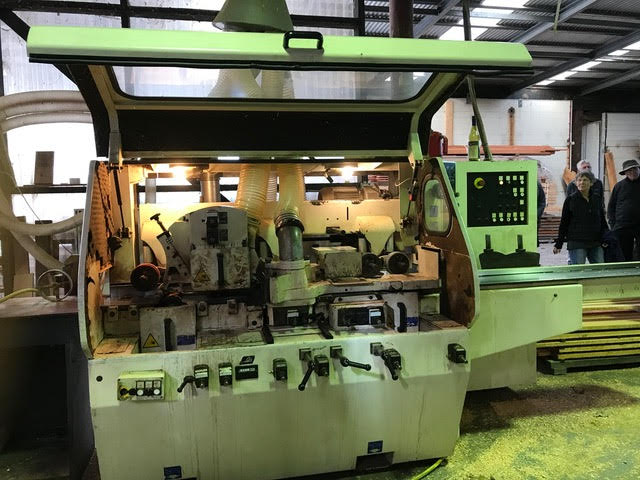
Kiln drying
Two large insulated container type rooms with fans and dehumifiers are used for kiln drying. The kiln operator knows his stuff. Steady drying is the key, just like baking a loaf of bread, you don’t want the crust all burnt and inside raw! This can take up to a week to dry wood, $60 day electricity to power the kiln. Kiln dried wood rests one day then goes out to the customer.
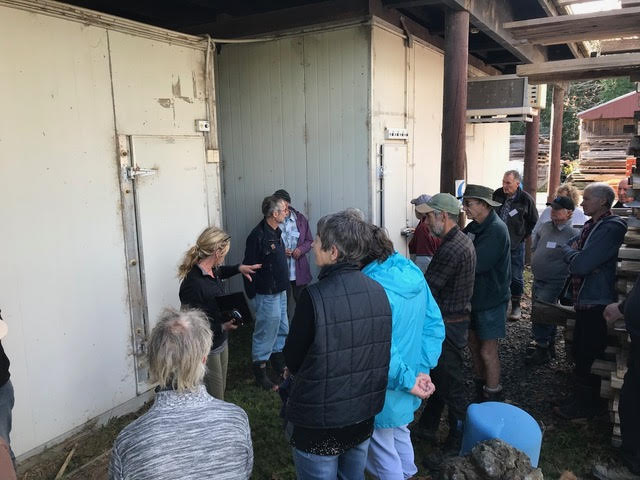
Eucalypts
Eucalypts in general are best to mill from 30 - 35 years of age. The largest improvement in durability is between ages 15 - 25 years. Durability doesn’t change much from 25 - 75 years. Diameters of 800mm are the best for sawmilling and producing good quality timber using the mahoe sawmill.

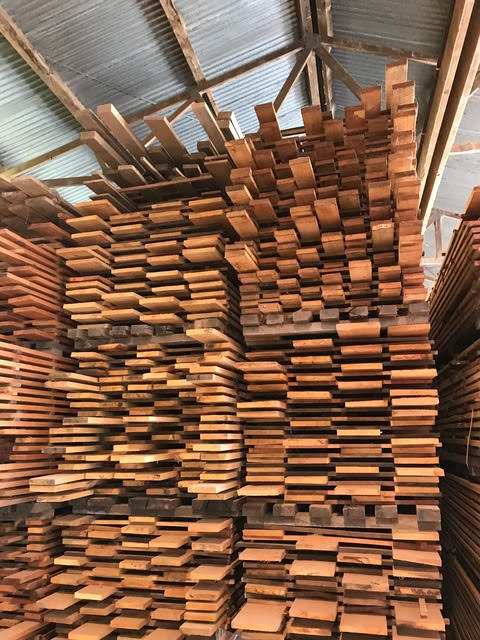
Demand has increased for naturally durable quality decking, flooring, outdoor landscaping seats etc for Councils.

 Farm Forestry New Zealand
Farm Forestry New Zealand